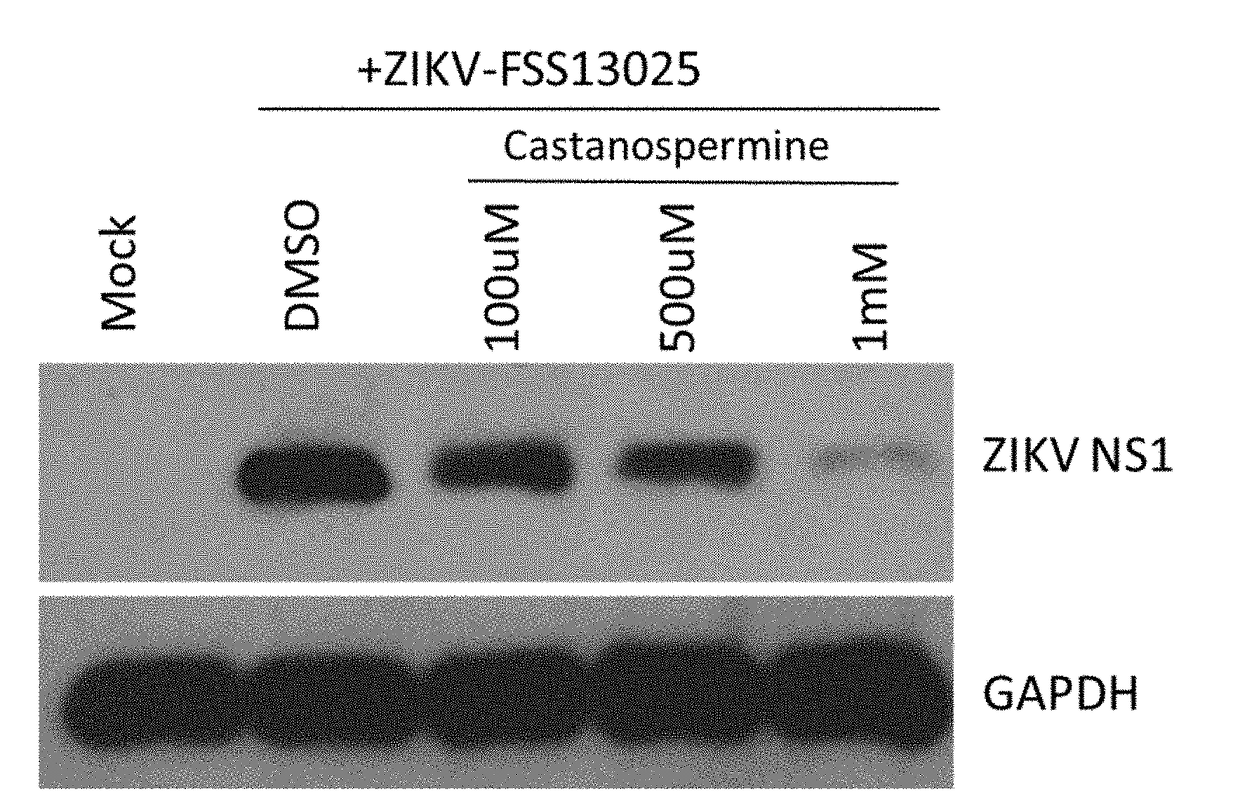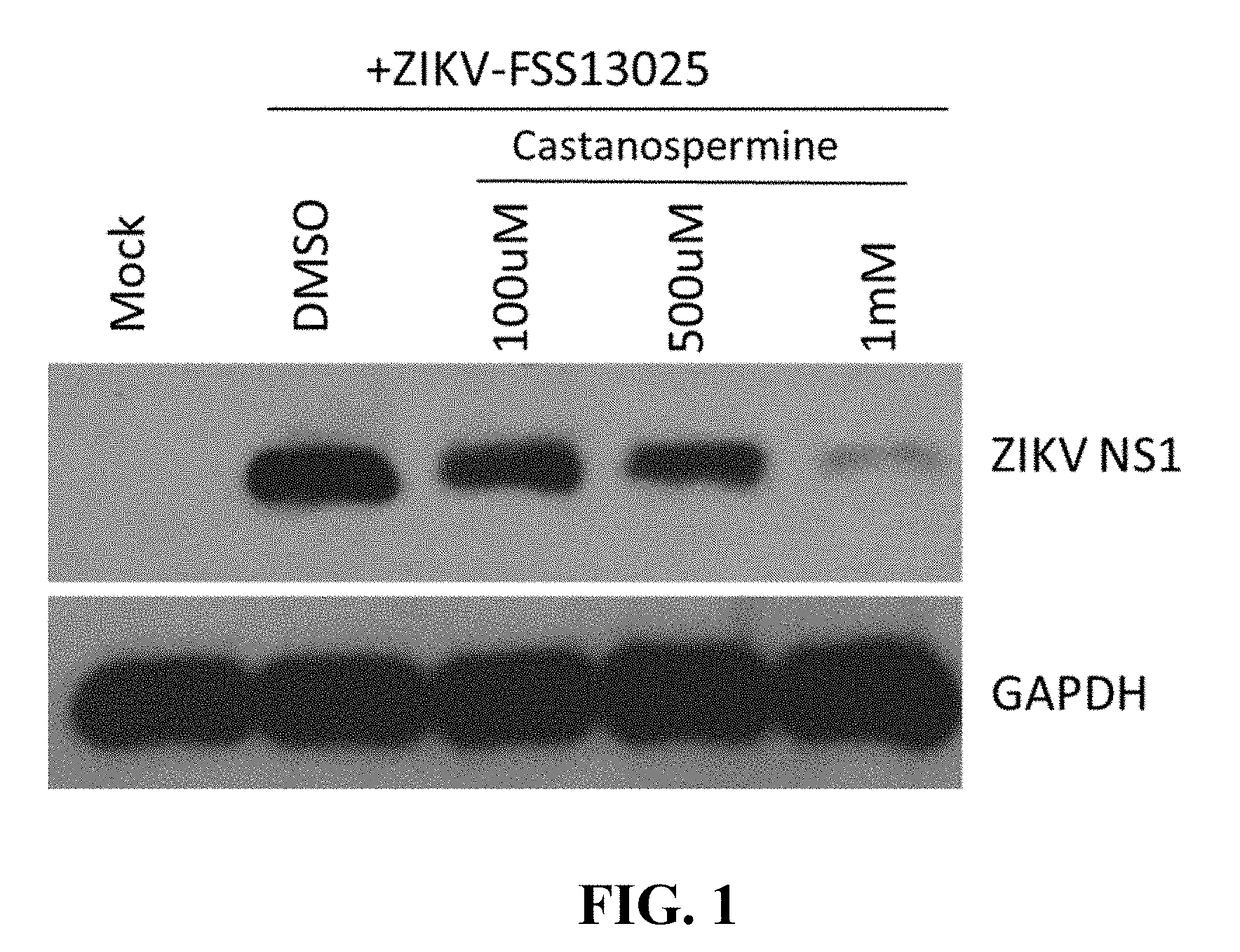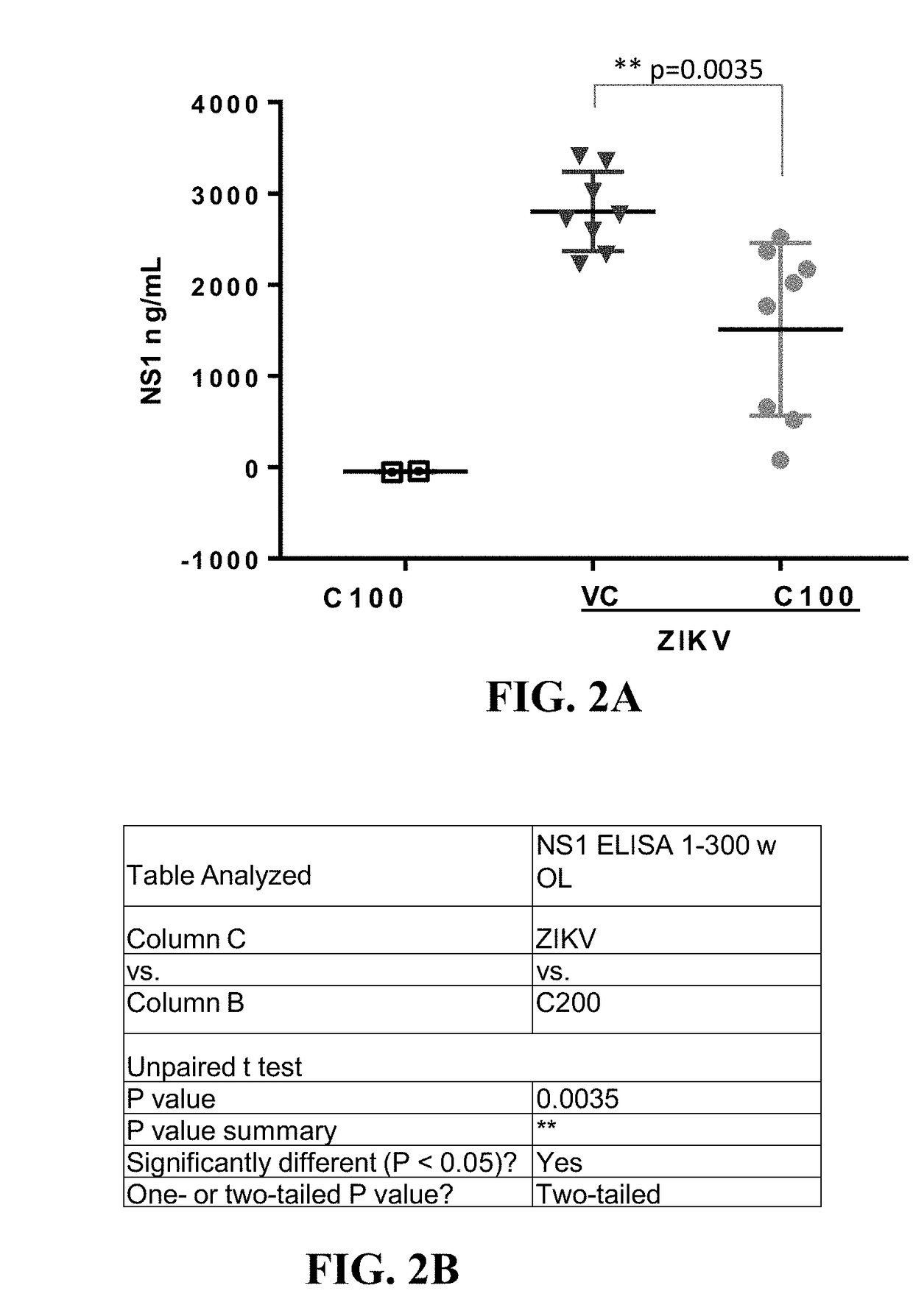Treatment of zika virus infections using alpha-glucosidase inhibitors
- Summary
- Abstract
- Description
- Claims
- Application Information
AI Technical Summary
Benefits of technology
Problems solved by technology
Method used
Image
Examples
embodiment 1
[0114]A method for treating or preventing Zika virus infection in a human or non-human animal subject, said method comprising administering an effective amount of an alpha-glucosidase inhibitor to a subject in need thereof.
embodiment 2
[0115]The method of embodiment 1, wherein the alpha-glucosidase inhibitor comprises an alpha-glucosidase I inhibitor (also referred to as a glucosidase I inhibitor).
embodiment 3
[0116]The method according to embodiment 1 or 2, wherein the subject has the Zika virus infection at the time of said administering.
PUM
| Property | Measurement | Unit |
|---|---|---|
| Time | aaaaa | aaaaa |
| Permeability | aaaaa | aaaaa |
Abstract
Description
Claims
Application Information
 Login to View More
Login to View More - R&D
- Intellectual Property
- Life Sciences
- Materials
- Tech Scout
- Unparalleled Data Quality
- Higher Quality Content
- 60% Fewer Hallucinations
Browse by: Latest US Patents, China's latest patents, Technical Efficacy Thesaurus, Application Domain, Technology Topic, Popular Technical Reports.
© 2025 PatSnap. All rights reserved.Legal|Privacy policy|Modern Slavery Act Transparency Statement|Sitemap|About US| Contact US: help@patsnap.com



